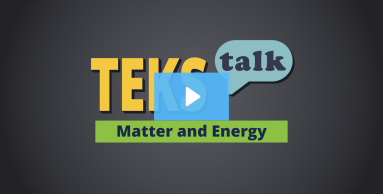- Science
- Grade 2
- Matter and its properties
Science.2.6.C
demonstrate that small units such as building blocks can be combined or reassembled to form new objects for different purposes and explain the materials chosen based on their physical properties.

Knowledge and Skills Statement
Provide students with a building brick kit. Ask groups of students to use the bricks to build a bridge that can hold the weight of a paperweight. Once they have successfully met that challenge, ask students to use the same brick kit to build a staircase that reaches a height of 8 inches. Afterwards, ask students if they used the same bricks in the same order to build each of these structures. Ask them why they used different bricks and put them together differently. Students should be able to tell you that each structure has a different purpose and needed the parts to be put together differently. Longer pieces may have been more helpful in building the bridge, but the staircase may have needed many smaller pieces to make it useable.
The further explanation is designed to be a resource for educators that helps them better understand the topic their students are learning. Further explanations may be written at a more complex level than would be expected for students at the grade level.
The engineering design process (EDP) is a thinking process used to teach and apply concepts and skills in an integrated manner. Engineers study physical properties to determine the best building materials for their designs and prototypes.
Research
Chalufour, Ingrid, Cindy Hoisington, Robin Moriarty, Jeff Winokur, and Karen Worth. “The Science and Mathematics of Building Structures.” Science and Children 41, no. 4 (2004): 30–34. http://www.jstor.org/stable/43173552.
Summary: Everyday classroom items, like building blocks, can enhance many science and mathematical skills, such as measurement, counting, patterns, and recognizing properties of materials. The teacher mentioned in this article started by having students explore different blocks and discuss how their size, shape, and material impact their ability to balance. Students were introduced to pictures of other famous structures as they were built freely. During this time, the teacher should observe the students' structures and ask them about their designs. The teacher also drew pictures of the structures the students were building and displayed them during their science talks. The class discussed how to build strong structures, with the teacher modeling vocabulary like "strong," "foundation," "under," and "between." Students should make observations as they build and record them.
